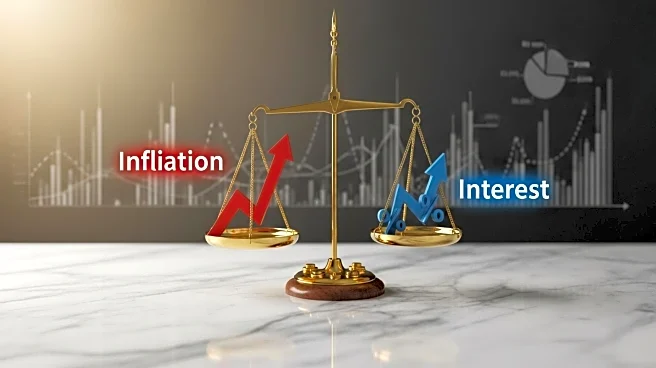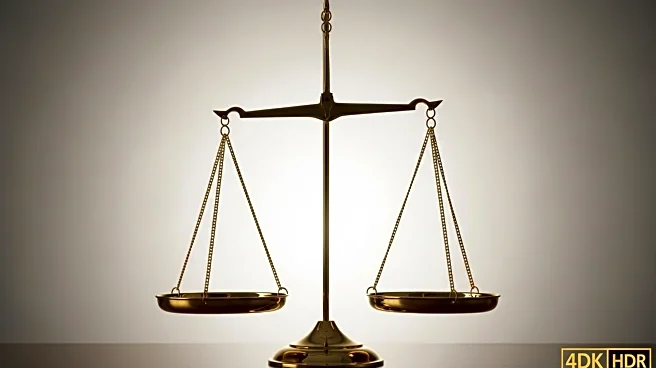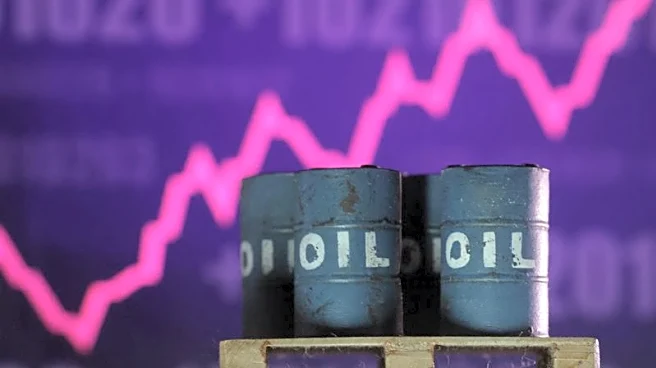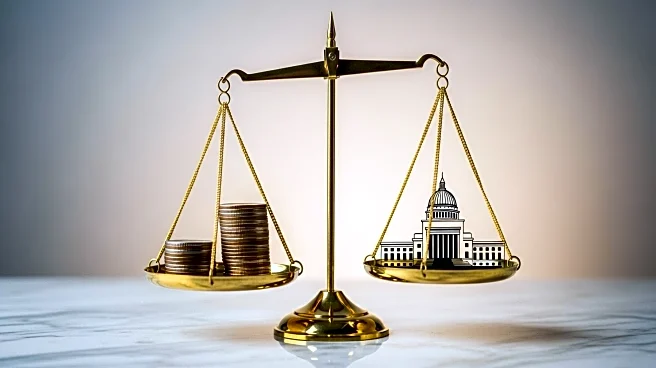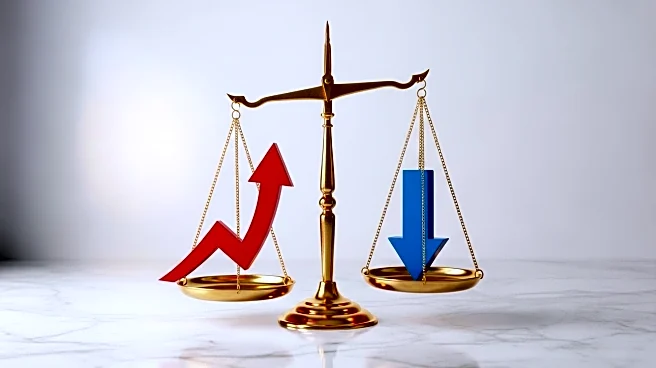What is the story about?
What's Happening?
U.S. inflation increased to 2.9% in August, the fastest pace since the beginning of the year, ahead of a key Federal Reserve meeting. The rise in consumer prices is attributed to higher costs for cars, household furnishings, and grocery staples, influenced by President Trump's tariffs. Despite the inflation uptick, the Federal Reserve is expected to cut interest rates by a quarter of a percentage point. The decision comes amid concerns about a weakening job market, with recent data showing fewer job gains and an increase in unemployment filings.
Why It's Important?
The rise in inflation, coupled with labor market challenges, presents a complex scenario for the Federal Reserve. While inflation typically warrants caution in rate cuts, the Fed's focus on supporting the labor market may take precedence. A rate cut could stimulate economic activity but also risks further inflation. The decision will have significant implications for businesses, consumers, and financial markets, influencing borrowing costs and economic growth. The ongoing impact of tariffs and trade policies remains a critical factor in economic discussions.
What's Next?
The Federal Reserve's interest rate decision will be closely watched, with expectations of a rate cut to support the economy. Policymakers will need to balance inflationary pressures with labor market concerns, adjusting their approach as economic conditions evolve. Businesses and consumers will need to adapt to potential changes in interest rates, which could affect investment and spending decisions. The impact of trade policies and tariffs will continue to be a key consideration for economic stakeholders.
AI Generated Content
Do you find this article useful?
